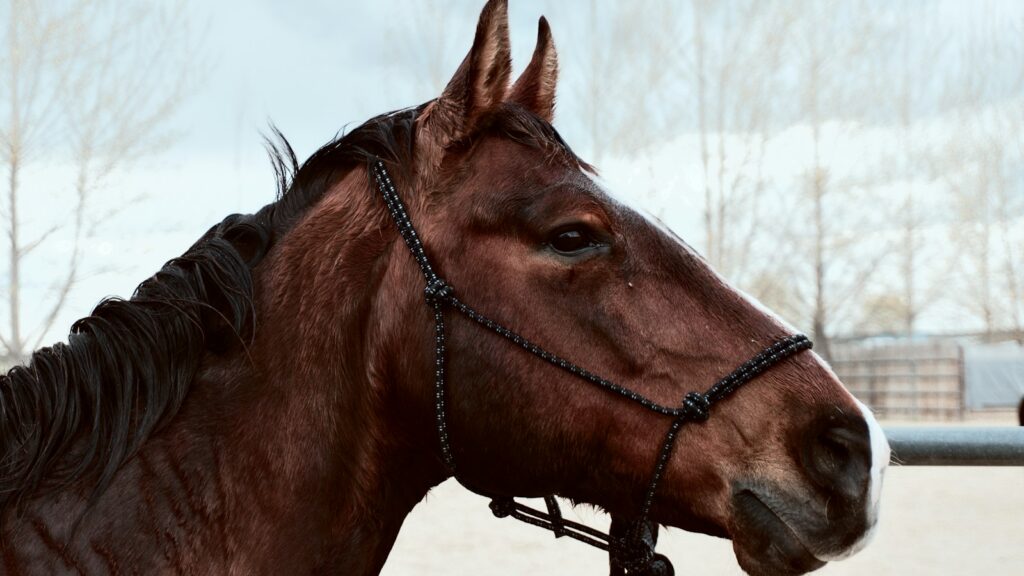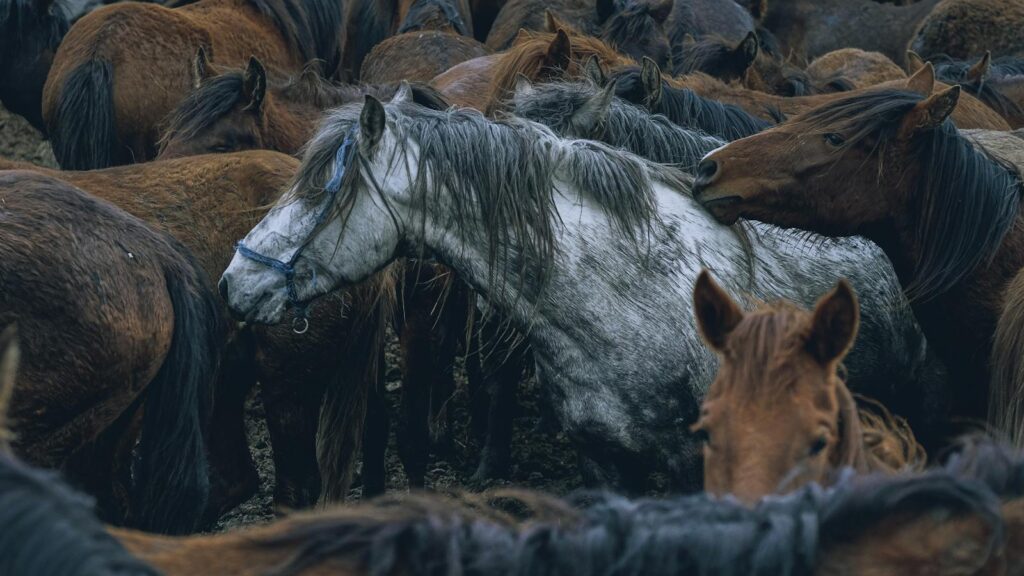Horse behavior journaling is a powerful tool for equestrians at all levels. By systematically recording and analyzing your horse’s actions, responses, and patterns, you can gain invaluable insights that might otherwise go unnoticed in day-to-day interactions. This practice bridges the communication gap between human and horse, allowing for more effective training, improved welfare, and a deeper bond. Whether you’re working through behavioral challenges, advancing training goals, or simply seeking to understand your equine partner better, a well-maintained behavior journal can transform your horsemanship journey.
Understanding the Value of Equine Behavior Journaling

Behavior journaling acts as your objective third eye, capturing details that may escape your notice during hands-on work with your horse. Unlike human memory, which can be selective and influenced by emotion, a journal provides concrete data points that reveal patterns over time. This documentation becomes particularly valuable when working with professionals like trainers or veterinarians, as it offers factual information rather than subjective impressions. Many experienced equestrians report that reviewing their journals helps them identify triggers for unwanted behaviors, recognize subtle improvements that might otherwise be missed, and maintain perspective during challenging training phases. The process of writing itself also encourages deeper observation and mindfulness around your horse, potentially improving your horsemanship skills independent of the insights gained from review.
Selecting the Right Journaling Method

Finding a journaling system that integrates seamlessly into your routine is crucial for long-term success. Traditional options include dedicated notebooks, pre-formatted equine journals, or specialized horse management apps with behavior tracking features. Digital methods offer searchability and often include media integration, allowing you to incorporate videos and photos to complement written observations. Paper journals, while less searchable, are durable in barn environments and don’t require battery power or connectivity. Some riders find success with hybrid approaches—perhaps quick notes in a barn-friendly notebook that later get transferred to a more comprehensive digital system. Consider your personal preferences, technological comfort level, and the practical realities of your barn environment when choosing your method.
Essential Categories to Include in Your Horse Behavior Journal

An effective behavior journal should include several standard categories to ensure comprehensive tracking. Basic information for each entry should include the date, time, weather conditions, and any notable environmental factors that might influence behavior. Document specific behaviors observed, both desirable and challenging, with objective descriptions that avoid subjective interpretations. Track contextual factors surrounding behaviors, such as who was handling the horse, what activities preceded the behavior, and whether other animals or people were present. Include physical observations like energy level, responsiveness to aids, and any changes in appetite, water consumption, or elimination patterns. Finally, maintain a section for training notes that details exercises attempted, modifications made, and the horse’s response to various approaches.
Developing a Consistent Journaling Routine

Consistency is the foundation of effective behavior tracking, making a regular journaling practice essential. Identify natural points in your horse care routine where you can incorporate brief journaling sessions, such as after riding, during cool-down walks, or while your horse is eating. Some riders find that setting a specific journaling time—perhaps immediately after barn visits or each evening—helps maintain the habit. Using technology to your advantage can also support consistency, whether through phone alarms, calendar reminders, or journaling apps with notification features. For those who struggle with consistency, partnering with a barn friend for accountability or integrating journaling into existing habits (like recording observations while watching your post-ride video) can help establish the practice as a non-negotiable part of your horsemanship.
Objective Observation Techniques

Developing objective observation skills is crucial for meaningful behavior journaling. Train yourself to describe behaviors in concrete, measurable terms rather than using interpretive language—for example, writing “horse backed three steps away and raised head 45 degrees” rather than “horse seemed scared.” Using an ethogram—a catalog of defined behaviors with specific criteria—can help standardize your observations and ensure consistency in your recording. Video recording sessions occasionally can serve as a reality check for your written observations, helping you identify blind spots in your perception. When observing challenging behaviors, practice stepping back emotionally and approaching the situation as a scientist would: with curiosity rather than judgment. This objective stance not only improves your journaling quality but often leads to breakthroughs in understanding your horse’s perspective.
Tracking Training Progress Effectively

Your behavior journal becomes particularly powerful when used as a training progress tracker. Establish clear, measurable baseline assessments for behaviors or skills you’re working to develop or modify. For each training session, document specific exercises attempted, the horse’s response, modifications made, and any breakthroughs or challenges encountered. Include quantifiable metrics where possible—such as the number of steps of lateral movement achieved, duration of relaxed standing, or percentage of successful responses to a particular cue. Periodically schedule formal assessment sessions where you test progress against your baseline measurements under controlled conditions. This methodical approach allows you to objectively evaluate whether your training plan is working or requires adjustment, and provides concrete evidence of progress during plateaus when improvements might feel invisible.
Identifying Patterns and Triggers

One of the most valuable aspects of behavior journaling is its ability to reveal patterns that might otherwise remain hidden. Regular review of your journal entries can uncover correlations between specific behaviors and environmental factors like weather changes, feeding schedules, or the presence of certain horses or people. These reviews often expose subtle precursor behaviors—the small signals that occur before more obvious reactions—which can be addressed early to prevent problematic behaviors from escalating. Pattern identification also helps distinguish between random occurrences and true behavioral trends, preventing overreaction to isolated incidents while appropriately addressing genuine concerns. Many owners report breakthrough moments when reviewing several months of journal entries revealed clear connections between seemingly unrelated factors and their horse’s behavior changes.
Incorporating Health Observations into Behavioral Notes

Behavior and physical health are inextricably linked in horses, making health observations an essential component of your journaling practice. Record vital signs like temperature, heart rate, and respiration rate periodically to establish normal baselines for your horse. Document physical observations such as weight changes, coat condition, hoof quality, and muscle development alongside behavioral notes. Pay particular attention to subtle shifts in movement patterns, energy levels, or appetite, as these often precede more obvious signs of discomfort or illness. These integrated health and behavior records can prove invaluable for veterinarians when diagnosing complex issues, potentially reducing diagnostic time and improving treatment outcomes. Many experienced horse owners report that their behavior journals have helped identify early signs of conditions like gastric ulcers, Lyme disease, or developing lameness issues before clinical symptoms became apparent.
Using Media to Enhance Written Observations

Incorporating various media forms into your behavior journal creates a more comprehensive record than written notes alone can provide. Photographs can document physical changes over time, such as muscle development, posture improvements, or expression changes that might be difficult to capture in words. Video recordings offer objective evidence of movement patterns, responses to aids, and the subtleties of horse-human interactions that memory might distort. Audio recordings can be surprisingly valuable for documenting vocalizations or breathing patterns during various activities. For digital journaling systems, establishing a consistent file naming convention that includes dates and context makes retrieving specific media examples much easier during review periods. Even those using primarily paper-based systems can incorporate media by printing key photos or noting specific time codes from videos stored elsewhere.
Collaborative Journaling with Professionals

Sharing your behavior journal with equine professionals can dramatically enhance the effectiveness of their services. Prior to veterinary appointments, compile relevant entries documenting behavior changes, potential symptoms, or concerns to provide your veterinarian with a comprehensive history beyond what might be recalled during a brief discussion. For training consultations, sharing journal entries gives professional trainers insight into your horse’s consistent patterns and the effectiveness of previously attempted approaches. Farriers and bodywork practitioners benefit from notes about movement changes or comfort issues you’ve observed between appointments. Creating a collaborative approach by inviting these professionals to contribute their own observations to your journal after sessions creates a centralized record of your horse’s care and progress. Many horse owners report that professionals particularly appreciate the objective, data-driven approach that a well-maintained behavior journal represents.
Overcoming Common Journaling Challenges

Even the most dedicated horse owners encounter obstacles in maintaining a consistent journaling practice. Time constraints represent the most common challenge, which can be addressed through template-based entries, voice-to-text dictation options, or abbreviated coding systems that allow quick recording of essential information. Barn environments present practical hurdles like dirty hands or lack of writing surfaces, making waterproof notebooks, barn-friendly digital devices, or voice recording alternatives worth considering. Many journalers struggle with knowing what to record, an issue often resolved by creating personalized templates with specific categories relevant to their particular goals and horse’s needs. Motivation challenges typically arise when immediate benefits aren’t apparent; combating this by scheduling regular review sessions can help maintain enthusiasm by showcasing patterns and progress that might otherwise remain invisible in day-to-day interactions.
Analyzing Journal Data for Meaningful Insights

The true value of behavior journaling emerges during thoughtful analysis of accumulated data. Schedule regular review sessions—perhaps monthly, quarterly, and annually—to identify patterns and evaluate progress toward specific goals. Consider creating simple visual representations of your data, such as color-coded calendars highlighting good days versus challenging days, or basic graphs tracking the frequency of specific behaviors over time. Look beyond obvious correlations to consider multi-factor influences, such as how combinations of weather changes, schedule disruptions, and feeding adjustments might collectively impact behavior. Analyzing your journal entries with a trusted equine professional can provide valuable outside perspective, helping to identify blind spots in your observations or interpretations. Many experienced journalers report that their most significant breakthroughs in understanding their horses came not from individual entries but from identifying subtle patterns that only became visible after months of consistent documentation.
Using Journal Insights to Refine Your Approach

The ultimate purpose of behavior journaling is to transform observations into actionable insights that improve your horse’s welfare and training outcomes. Use pattern recognition to develop proactive management strategies, such as implementing specific preparation routines before situations your journal has identified as challenging for your horse. When evaluating training approaches, let your journal data guide modifications based on documented effectiveness rather than assumptions or conventional wisdom that may not apply to your specific horse. For horses with behavioral challenges, journal-based evidence can help distinguish between issues requiring veterinary intervention versus those better addressed through training or management changes. Many riders report that regular journaling has shifted their entire approach to horsemanship, moving from reaction-based handling to proactive, individualized strategies based on their deepened understanding of their horse’s unique needs, preferences, and communication style.
conclusion

Horse behavior journaling represents far more than simple record-keeping—it’s a transformative practice that deepens your understanding of your equine partner while providing concrete data to guide your horsemanship decisions. By committing to consistent, objective observation and thoughtful analysis, you create a powerful tool that reveals subtle patterns, documents genuine progress, and builds a more effective partnership with your horse. Whether you’re working through training challenges, managing behavioral issues, or simply seeking to optimize your horse’s wellbeing, a well-maintained behavior journal provides the insights needed to make informed decisions. As many experienced equestrians discover, the practice not only improves outcomes for your horse but often transforms your own horsemanship journey through the cultivation of patience, objectivity, and deeper observation skills.







